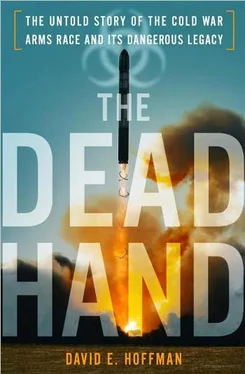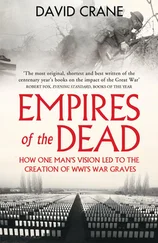Vetrov revealed the names of more than two hundred Line X officers in ten KGB stations in the West. “Reading the material caused my worst nightmares to come true,” said Gus Weiss, a White House official. “Since 1970, Line X had obtained thousands of documents and sample products in such quantity that it appeared the Soviet military and civilian sectors were in large measure running their research on that of the West, particularly the United States. Our science was supporting their national defense.” 20
Rather than roll up the Line X officers and expel them, Reagan approved a secret plan to exploit the Farewell dossier for economic warfare against the Soviet Union. The plan was to secretly feed the Line X officers with technology rigged to self-destruct after a certain interval. The idea came from Weiss, who approached Casey, who took it to Reagan. The CIA worked with American industry to alter products to be slipped to the KGB, matching the KGB’s shopping list. “Contrived computer chips found their way into Soviet military equipment, flawed turbines were installed on a gas pipeline, and defective plans disturbed the output of chemical plants and a tractor factory,” Weiss said. “The Pentagon introduced misleading information pertinent to stealth aircraft, space defense, and tactical aircraft.”
Oil and gas equipment was at the top of the Soviet wish list, and the Soviets needed sophisticated control systems to automate the valves, compressors and storage facilities for a huge new pipeline to Europe. When the pipeline technology could not be purchased in the United States, the KGB shopped it from a Canadian firm. However, tipped by Vetrov, the CIA rigged the software sold from Canada to go haywire after a while, to reset pump speeds and valve settings to create pressures far beyond those acceptable to the pipeline joints and welds. One day, the system exploded. “The result was the most monumental non-nuclear explosion and fire ever seen from space,” Reed recalled. The blast was starting to trigger worried looks in the U.S. government that day, he recalled, when, at the National Security Council, “Gus Weiss came down the hall to tell his fellow NSC staffers not to worry.” The explosion had been one of the first fruits of the Reagan confrontation.
Soviet leaders were jittery. Sometime in 1981 they realized that the United States had been tapping one of their most secret military cables linking naval bases with commanders in the Far East. The tap in the Sea of Okhotsk had been placed by U.S. submarines in an operation code-named Ivy Bells. The Soviets may have been alerted when the U.S.S. Seawolf , a reconnaissance submarine, set down by accident right atop the Soviet cable. Also, in 1980, Ronald Pelton, who had worked at the National Security Agency, began selling information about Ivy Bells to the Soviets for money. 21On learning of the tap, the Soviets sent a scavenger ship and found the super-secret device, pulling it up from the ocean floor. There was no mistaking what it was: one part inside said “Property of the United States Government.” 22
In May 1981, Brezhnev denounced Reagan’s policies in a secret address to a major KGB conference in Moscow. An even more dramatic speech was given by Yuri Andropov, chairman of the KGB, who declared that the new U.S. administration was actively preparing for nuclear war. He said there was now the possibility of a nuclear first strike by the United States, and the overriding priority of Soviet spying should be to collect intelligence on the nuclear threat from the United States and NATO. Andropov announced that the KGB and the GRU, Soviet military intelligence, were launching a new program to collect intelligence around the world. It was code-named RYAN, the acronym of Raketno-Yadernoe Napadenie —nuclear missile attack. The GRU was responsible for monitoring any Western military preparations for a first strike on the Soviet Union, while the KGB’s task was to look for advance warning of an attack decision by the United States and its NATO allies. The first instructions went out to KGB residencies in November 1981. 23
When he was president, Reagan carried no wallet, no money, no driver’s license, “no keys in my pockets—only secret codes that were capable of bringing about the annihilation of much of the world as we knew it,” he said in his memoir. He carried a small, plastic-coated card in his coat which “listed the codes I would issue to the Pentagon confirming that it was actually the president of the United States who was ordering the unleashing of our nuclear weapons.” In an emergency, Reagan would have to choose options for responding to nuclear attack. “But everything would happen so fast that I wondered how much planning or reason could be applied in such a crisis,” he said. “The Russians sometimes kept submarines off our East Coast with nuclear missiles that could turn the White House into a pile of radioactive rubble within six or eight minutes. Six minutes to decide how to respond to a blip on a radar scope and decide whether to release Armageddon! How could anyone apply reason at a time like that?”
In early 1982, Reagan got a closer and more disturbing look at the options. His national security adviser in the first year, Richard Allen, had resigned, and Reagan turned to a trusted friend, William P. Clark, who had been his executive secretary in Sacramento and later a California Supreme Court justice. Reagan and Clark shared a love of horseback riding through the California hills. At the White House, Clark cut an imposing figure, in dark suits and expensive, hand-tooled black cowboy boots. Clark had served as deputy secretary of state in 1981, but otherwise had little national security experience. Most importantly, he enjoyed Reagan’s confidence and shared the president’s political and social conservatism, and his strong anti-communism.
When he became national security adviser, Clark brought Thomas C. Reed into the White House with him. Reed once designed nuclear weapons at the Lawrence Livermore National Laboratory in California. He served in Reagan’s gubernatorial offices during the first term in Sacramento, and ran Reagan’s 1970 reelection campaign. Reed also had experience in Washington; in 1973, he was the Pentagon director of telecommunications and command and control systems, where he worked on modernizing the nuclear communications systems. Later, he served as secretary of the air force under President Gerald Ford. He knew well the workings of global military communications linking NORAD and other military bases to the Pentagon war room.
Reed saw a worrisome disconnect when he got to the White House. The network of communications with the president was a jumble of telephones, radios and hideouts dating from Eisenhower. When he examined the system to evacuate the president in the event of a nuclear attack, Reed was further alarmed; nuclear missiles could arrive before the president even got out of the White House in a helicopter. Carter’s directives in 1980 called for upgrades to the system of presidential command and control, and the creation of a steering group. Reed became chairman of the group, but found the Carter directive was mired in the bureaucracy, and the Defense Department was balking at taking any action. 24Reed said, “The system as I found it would have been headless within minutes of an attack.”
This fear of decapitation of the leadership was just one sign of the immense tensions building at the time between Moscow and Washington. With rapid advances in weapons technology, a lightning strike could wipe out either party within minutes. The Americans worried about Soviet submarines carrying nuclear missiles off the East Coast, or surfacing in the Arctic. The Soviets were fearful of American missiles in Europe reaching the Kremlin. In the early summer of 1982, the Pentagon circulated a 125-page, five-year defense plan that called on U.S. forces to be ready to fight a protracted nuclear war, and to decapitate the Soviet leadership. The document asserted that American forces must be able to “render ineffective the total Soviet (and Soviet-allied) military and political power structure.” 25
Читать дальше












